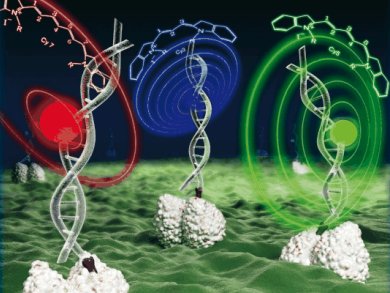Single-molecule methods have developed into a very powerful tool, with interesting applications in medicine, chemistry, physics and biology. Single molecules now can be detected and investigated by using electrophysiological approaches, force microscopy, electron microscopy or fluorescence microscopy. These techniques have opened up new experimental approaches to investigating the physical world as one is no longer limited by ensemble averaging.
Christoph Bräuchle, Professor of Physical Chemistry at the Ludwig Maximilians University (LMU), Munich, Germany, has made important contributions to this fascinating field of research. He is particularly known for his pioneering work on single-virus tracking in living cells and for his groundbreaking studies of the diffusion of single molecules within nanoporous materials.
Christoph Bräuchle studied chemistry and physics at the Technical University Berlin, Germany, and the University of Tübingen, Germany, from 1968–1973. He gained his Ph.D. and Habilitation in physical chemistry from the LMU in 1978 and 1982, respectively. He spent a year as a postdoctoral fellow at IBM, San José, California, USA, before taking up a position at the LMU as a Teaching and Research Assistant. In 1984, he was appointed as an assistant professor, which was followed by a full professorship in 1986 at the Technical University Berlin. Since 1988, he has been a full professor for physical chemistry at the LMU.
Bräuchle has served on the Editorial Board of ChemPhysChem since 2000 and is also a Member of the Board of the Excellence Cluster “Nanosystems Initiative Munich” (NIM) at the LMU.
On the occasion of Bräuchle’s 65th birthday, ChemPhysChem has published a special issue on single molecules. It includes 25 invited contributions by leading scientists in the field and has been guest edited by Thomas Bein, LMU, Germany, Don C. Lamb, LMU, Germany, and Jens Michaelis, Ulm University, Germany. The scope of the special issue is broad, including contributions on spectroscopy, method development, diffusion and tracking, and nanoscience.
Image: © Wiley-VCH
- ChemPhysChem Special Issue: Single Molecule Studies
ChemPhysChem 2012, 13(4). - Editorial: A Man for Single Molecules,
T. Bein, D. C. Lamb, J. Michaelis,
ChemPhysChem 2012, 13(4), 883–884.
DOI: 10.1002/cphc.201200095




